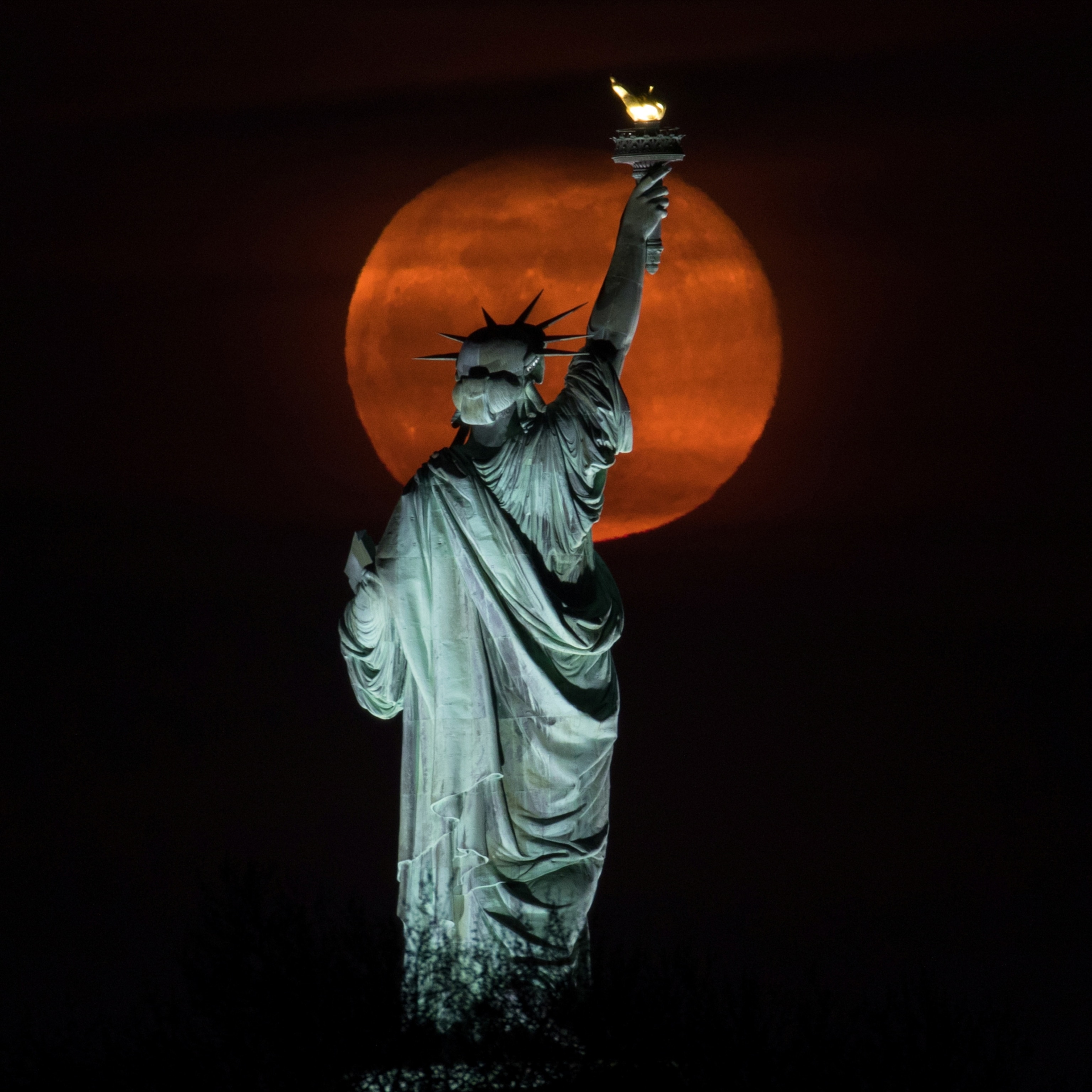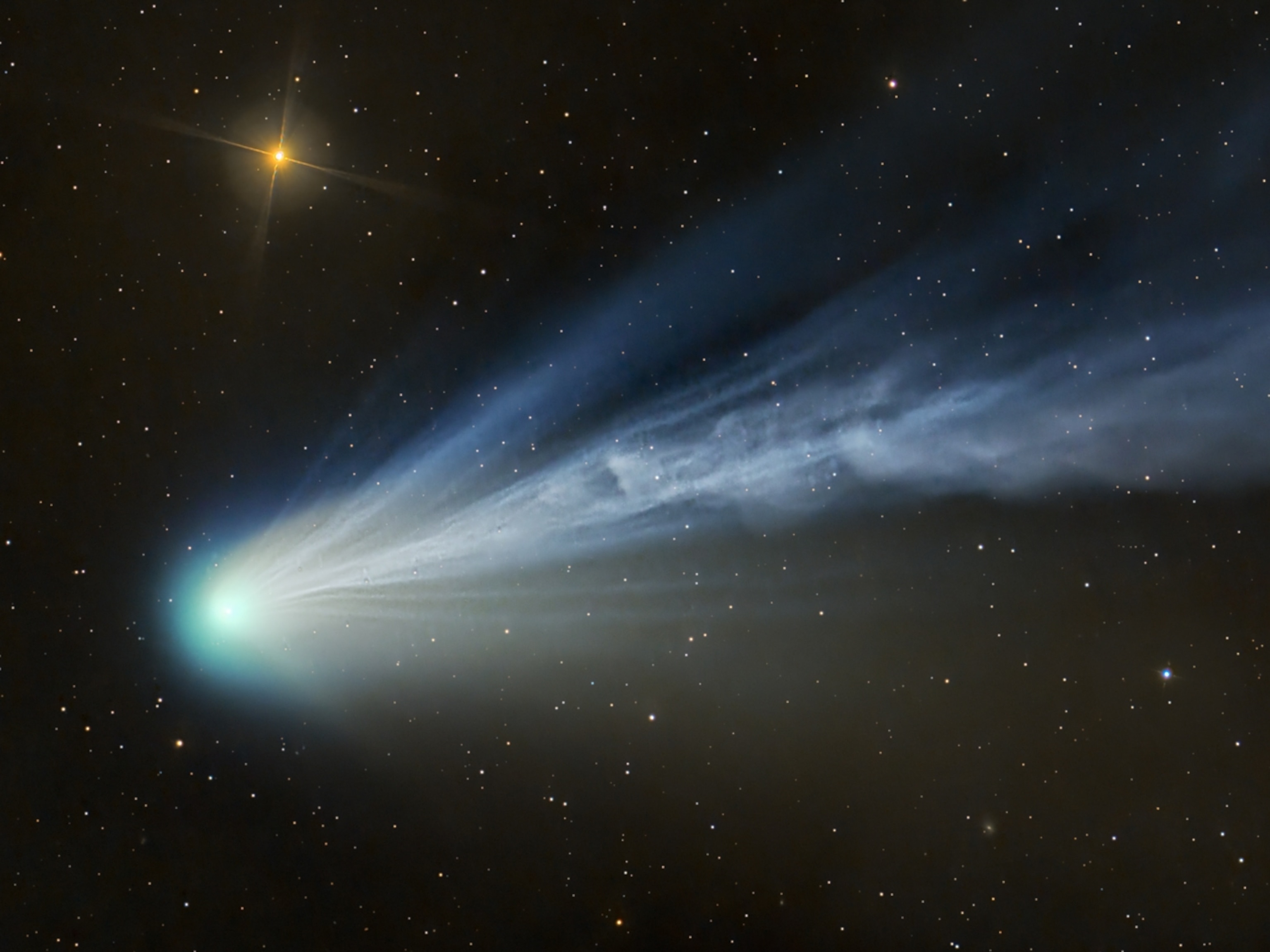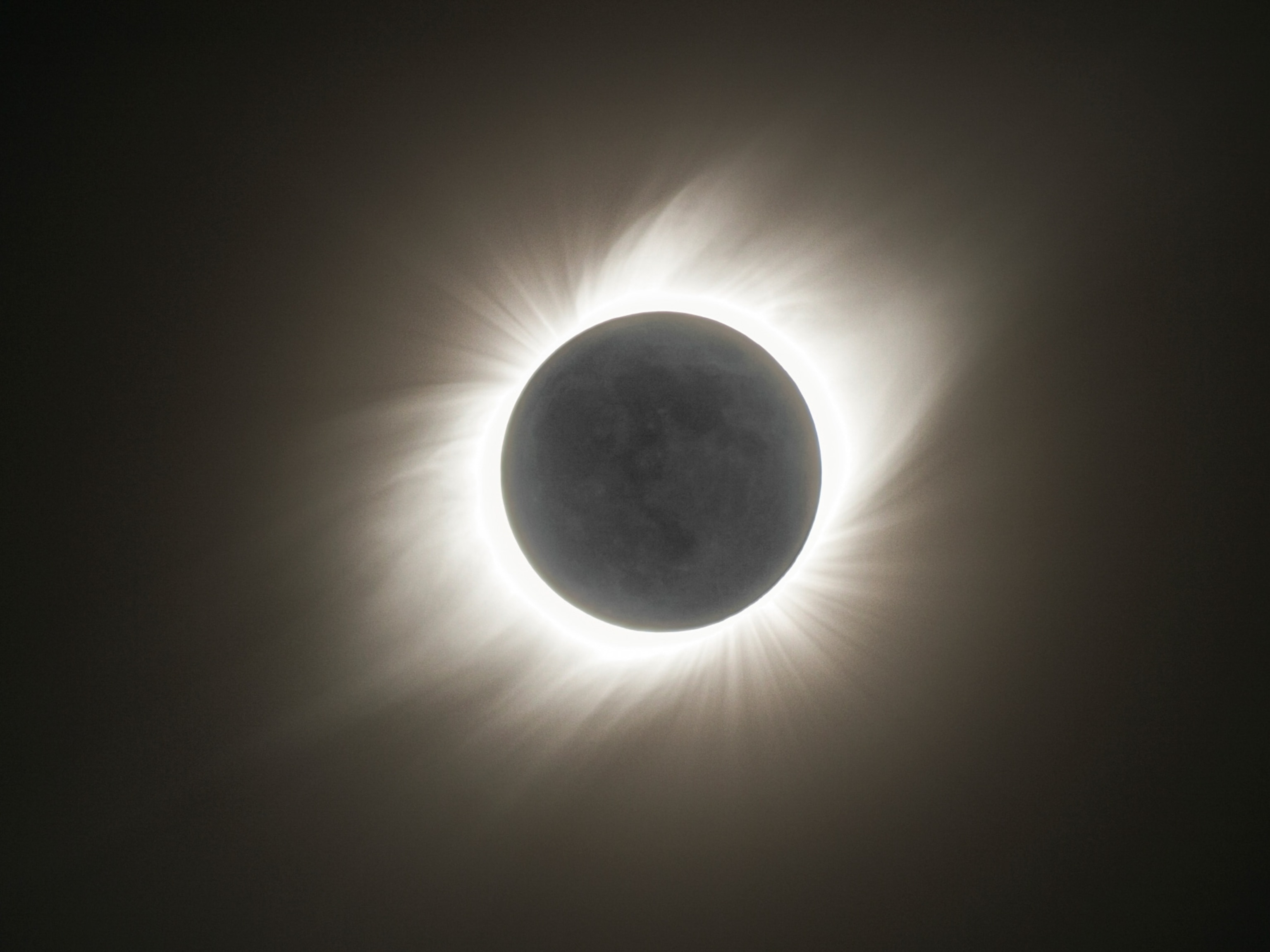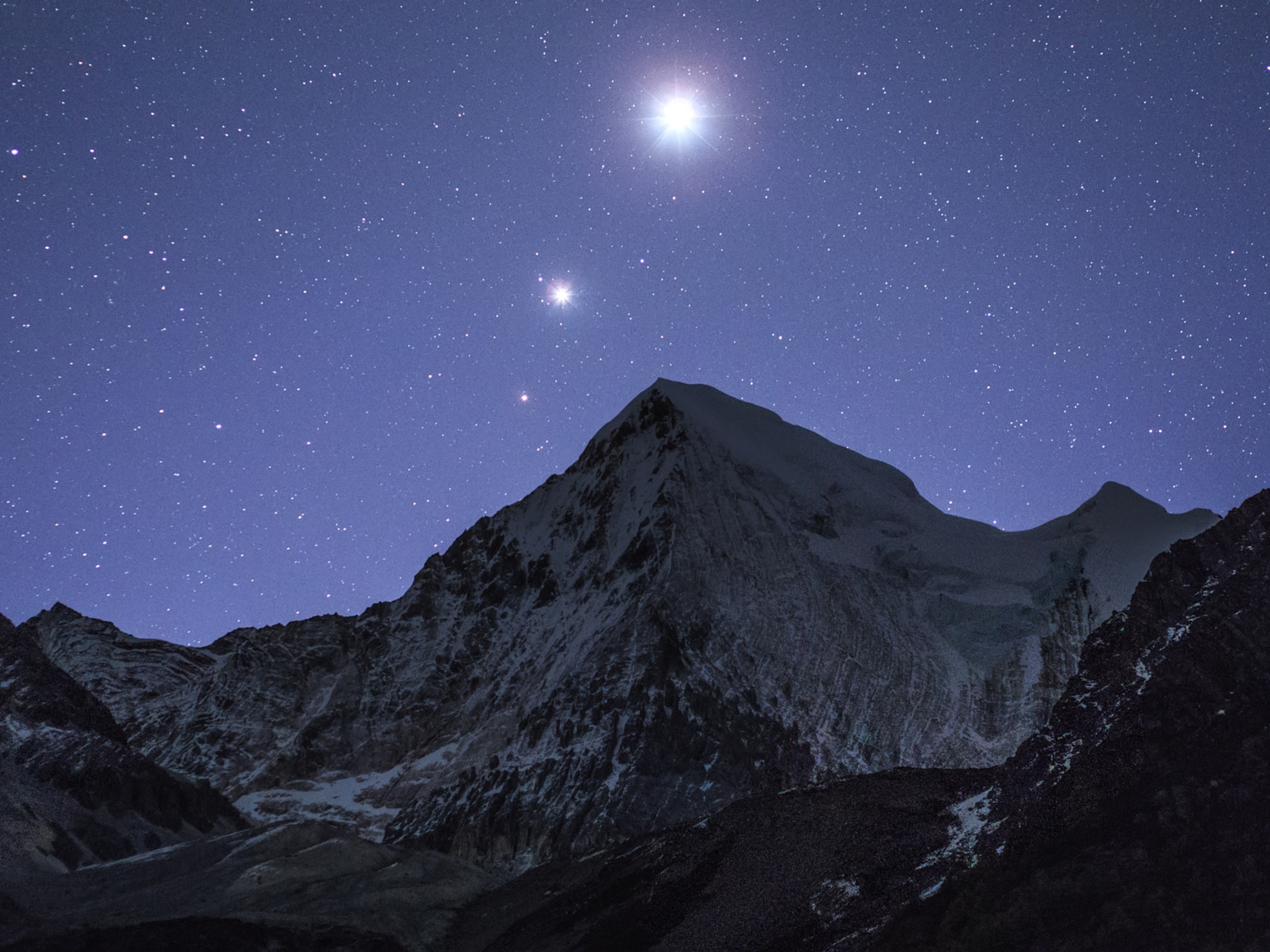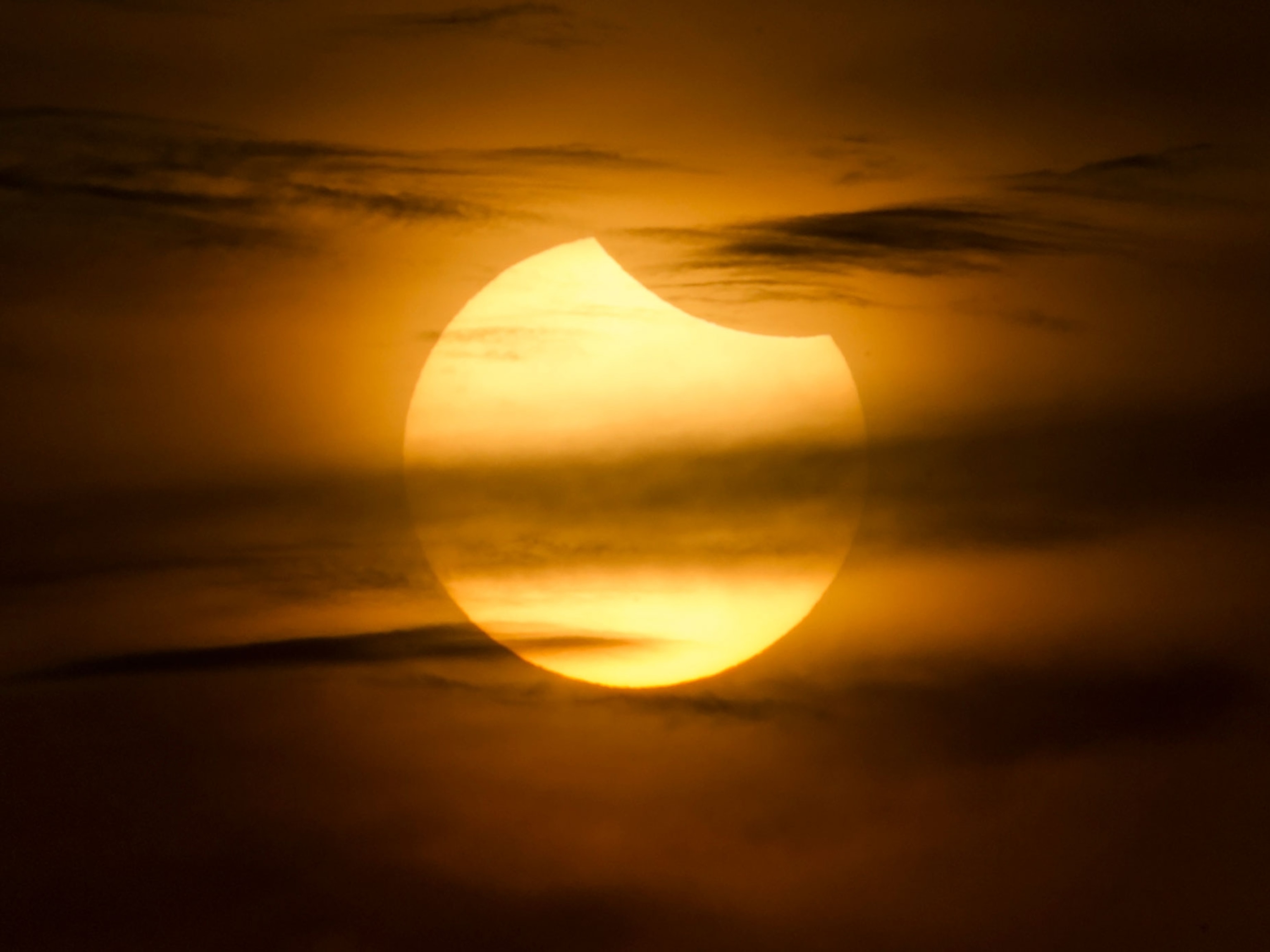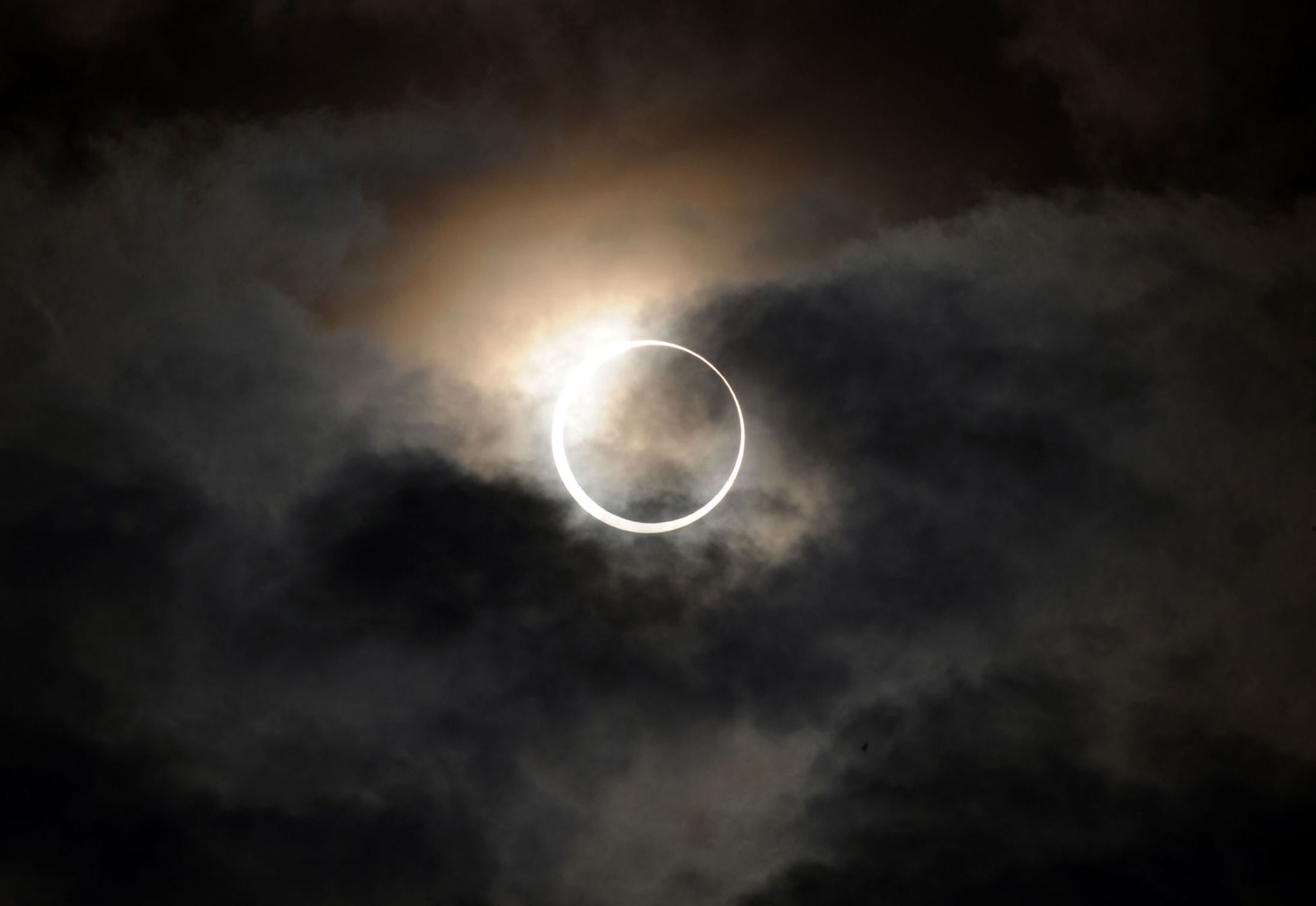
Top sky-watching events coming in 2019
Get ready to witness amazing eclipses, a rare planetary transit, and more celestial wonders in the new year.
While scores of amazing astronomical phenomena are in the offing each month, the year ahead offers some particular delights for sky-watchers, including a pair of lunar disappearing acts and a rare chance to see the solar system’s innermost planet silhouetted against the sun.
These are our picks for the celestial events you should definitely circle on your calendar for 2019.
Super blood moon eclipse—January 20-21
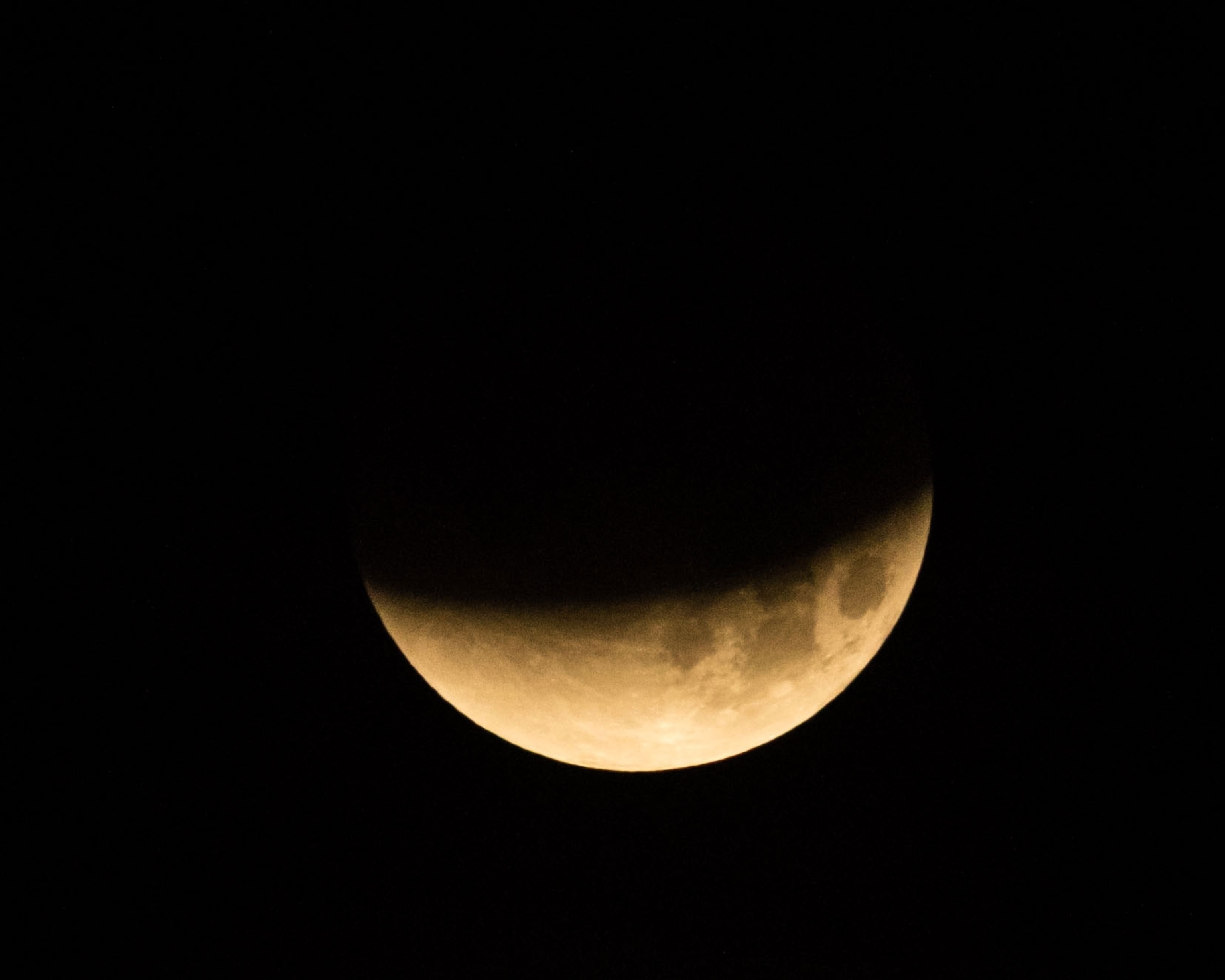
The new year kicks off with a chance to witness one of the most widely shared types of sky shows: a total lunar eclipse. On January 20 and 21, Earth's dark shadow will creep over the bright lunar disk as our planet moves between the sun and the moon, turning the silvery orb blood red.
Lunar eclipses only happen during full moons, and the one that rises in late January will be bigger and brighter than average, making it a so-called supermoon. Adding to the special event, this will be the last total lunar eclipse that will grace Earth’s skies until May 26, 2021.
Totality, or total coverage of the moon, will begin at 11:41 p.m. ET on January 20 (4:41 UT on January 21) and will last for 62 minutes. The entire 3.5-hour event—including partial eclipses before and after totality—will be visible from the Americas, Greenland, Iceland, western Europe, and western Africa. Sky-watchers in eastern Europe and eastern Africa will witness only the partial eclipse, while people in most of Asia will not see any part of the sky show.
Moon joins Jupiter—April 23

Look toward the southern sky at local dawn to see the waning gibbous moon make an eye-catching close encounter with the bright planet Jupiter. The cosmic duo will rise in the east at about 1 a.m. local time and will ride high in the south by dawn. While the event is an impressive sight with just the naked eye, it will be equally striking to spy the pair together through binoculars and telescopes.
Eta Aquarid meteor shower—May 6

While both the Perseid and Geminid meteor showers will have to contend with a bright moon washing out some of their shooting stars, a dark new moon will make the Eta Aquarids the best meteor shower of 2019.
Astronomers expect rates of up to 30 meteors an hour to be streaking through the northeast skies starting around 10 p.m. local time on the 5th and peaking in the early morning hours of the 6th. The individual shooting stars of the Eta Aquarids will appear to come from the eastern part of the sky, where their namesake constellation Aquarius, the water bearer, can be seen this time of year. (How well do you know the constellations? Take our quiz.)
This annual shower’s claim to fame is not how many meteors fall, but where they come from: Every shooting star you will see that night is a leftover piece of Halley’s comet. This famous ball of ice and rock last visited our corner of the solar system back in 1986, and it won't return until 2062. In the meantime, we can see the sand grain-size particles shed by this icy visitor burn up high above our heads each May.
Total solar eclipse—July 2
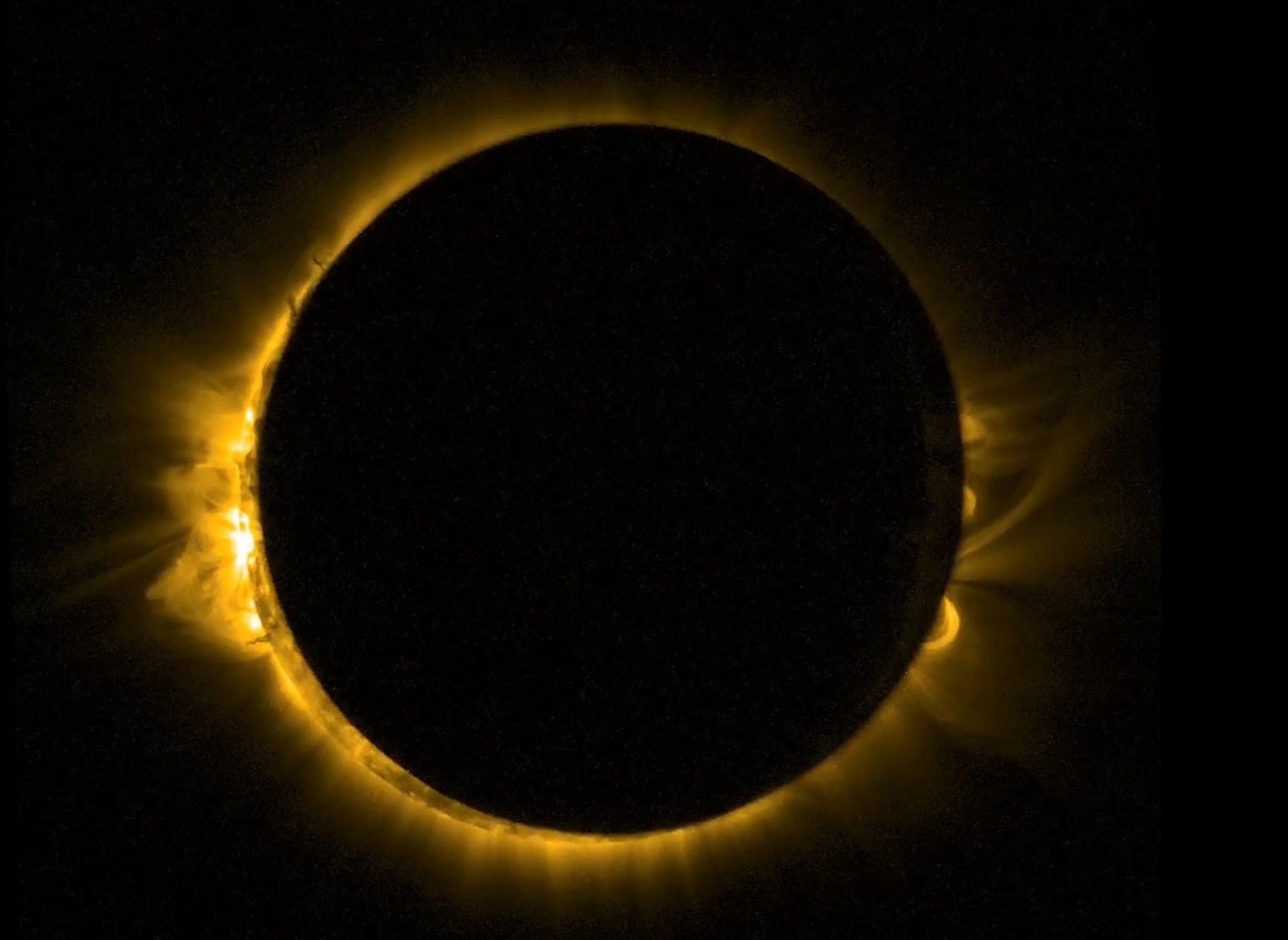
The moon will pass between Earth and the sun on July 2, 2019, creating an awe-inspiring total solar eclipse for lucky sky-watchers in the South Pacific, Chile, and Argentina.
The entire event will last from 12:55 p.m. ET to 5:50 p.m. ET (16:55 UT to 21:50 UT), with the maximum eclipse occurring at 3:23 p.m. ET (19:23 UT). The sun will be covered up for two to two-and-a-half minutes as seen from locations along the path of totality, which cuts across South America from La Serena, Chile, to Buenos Aires, Argentina.
While the full eclipse, including totality, will only be visible along a narrow band in these regions, people in Ecuador, Brazil, Uruguay, and Paraguay will be able to see the partial solar eclipse, weather and cloud cover permitting.
Partial lunar eclipse—July 16
On July 16, 1969, NASA astronauts lifted off on humanity’s first mission to set foot on the moon. Exactly 50 years later, people on Earth will be able to watch the moon’s face darken during a partial lunar eclipse.
Starting at 2:43 p.m. ET (18:43 UT) on the 16th, Earth’s shadow will glide across the lunar disk, darkening the brilliant orb for sky-watchers across South America, Europe, Africa, southern Asia, and Australia. Lasting about five-and-a-half hours, the eclipse will cover up roughly 60 percent of the full moon at its peak.
Transit of Mercury—November 11
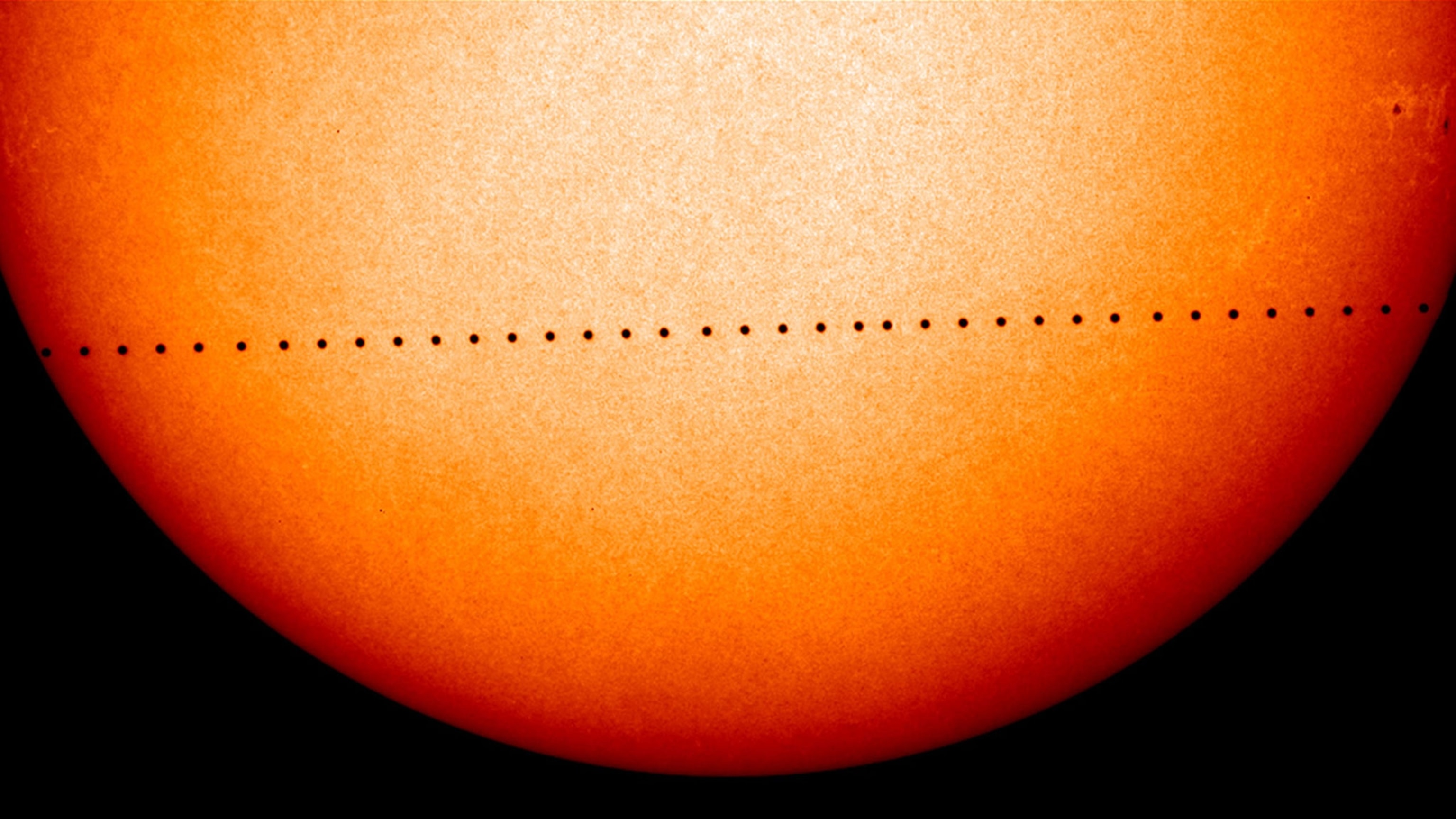
Sky-watchers will get a truly rare treat on the 11th, when the planet Mercury will glide across the face of the sun. The tiny black silhouette of the innermost planet in our solar system will take about five-and-a-half hours to make its trek across the solar disk, starting at 7:35 a.m. ET (12:35 UT) and lasting until 1:04 p.m. ET (18:04 UT).
Weather permitting, the whole transit will be visible from large portions of Earth, including the Americas, Europe, Africa, and western Asia. People in central and eastern Asia, Japan, and Australia will miss out, since it will be nighttime there. Safe viewing of the transit will require a small telescope equipped with a proper solar filter. Catch it while you can: The previous transit of Mercury happened in 2016, and we won’t see one again until 2032.
Annular solar eclipse—December 26
Sky-watchers will get to soak up their second solar disappearing act of the year, when an annular eclipse cuts across the Middle East and Asia on the 26th. During an annular eclipse, the moon is farther from Earth, so its apparent size is smaller than the solar disk. That means the sun but does not fully cover the solar disk, producing a striking “ring of fire” effect.
The full annular eclipse will start at 10:34 p.m. ET on the 25th (3:34 UT on the 26th) and will race across Saudi Arabia and Oman, hit the southern tip of India and Sri Lanka, and then cross over to Sumatra, Singapore, and Guam. Special eclipse glasses with a proper solar filter are a must to watch this event safely.
Crescent moon meets Venus—December 28
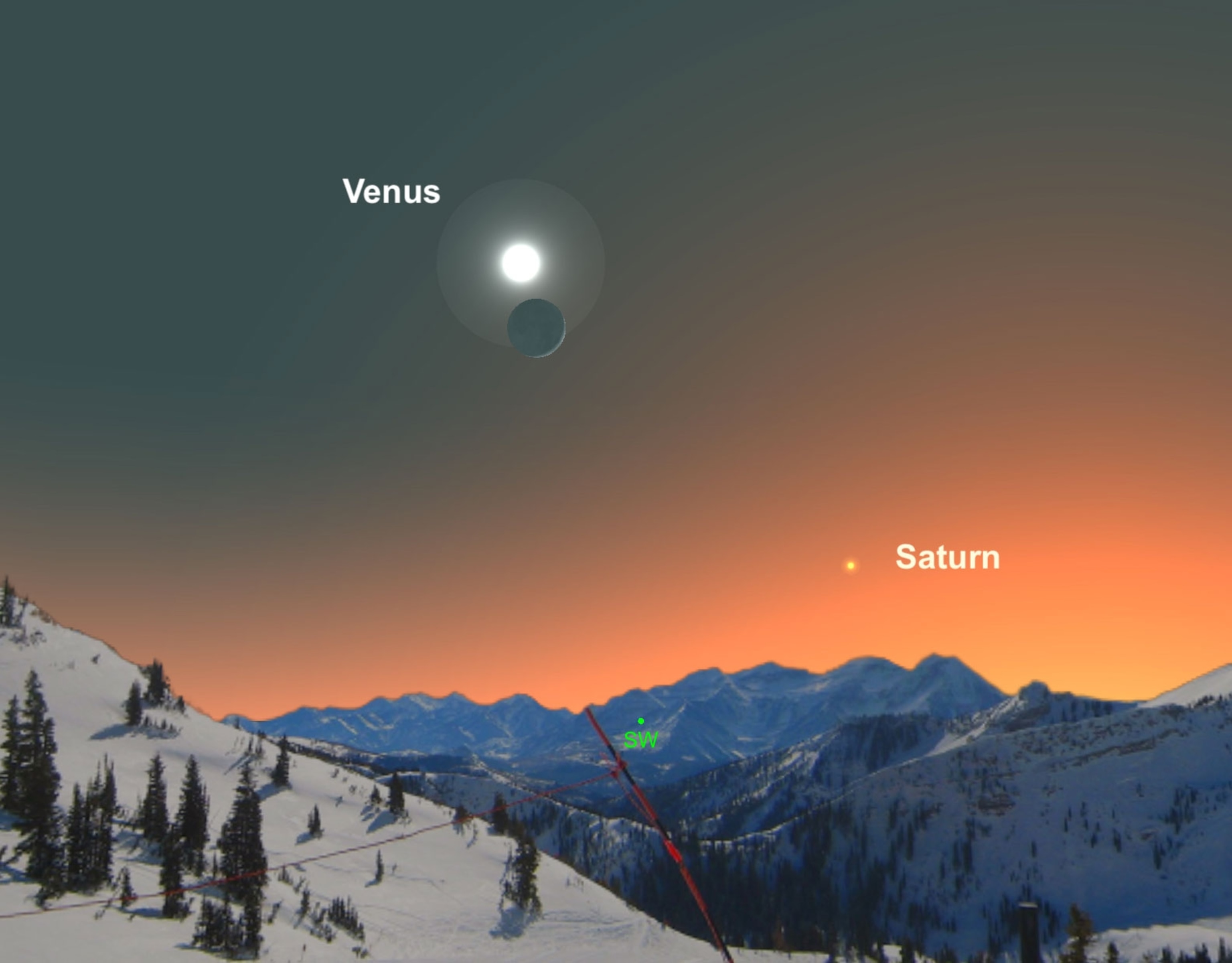
The year closes with an eye-catching close pairing between the waxing crescent moon and the planet known as the evening star. Even urban sky-watchers under light-polluted skies will be able to see the pretty pair hanging low in the southwestern sky at dusk.
Clear skies!



